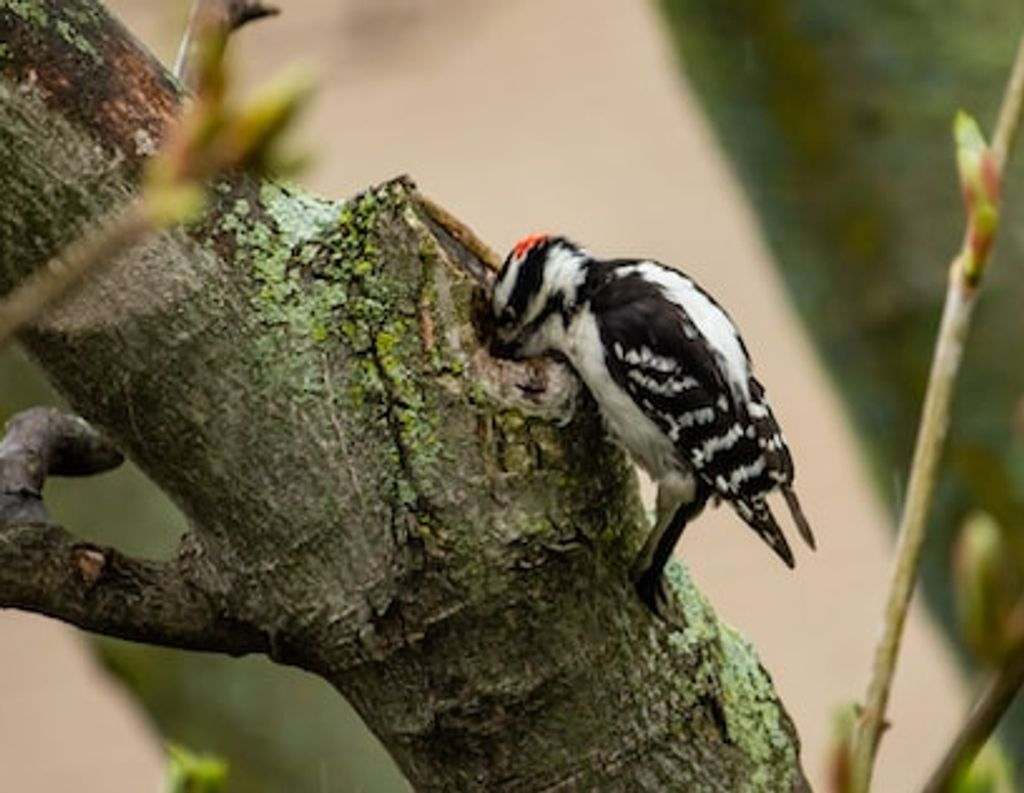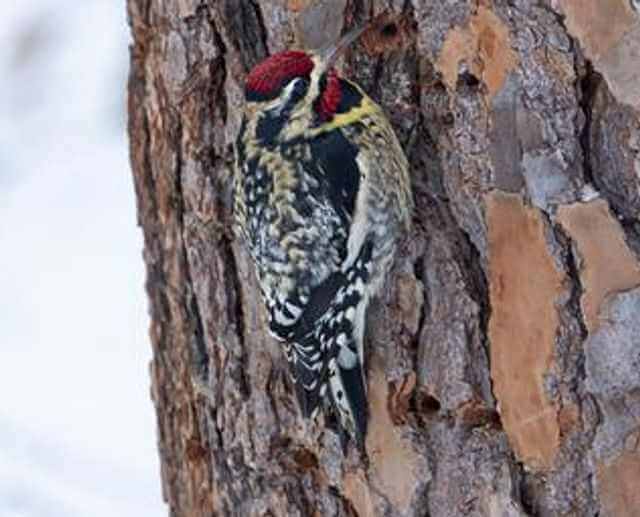Welcome to our ultimate guide on the 16 types of woodpeckers in Oregon! Woodpeckers are fascinating birds known for their distinctive drumming and pecking behaviors.
In this comprehensive guide, we’ll explore the diverse range of woodpecker species found in Oregon, from the majestic Pileated Woodpecker to the diminutive Downy Woodpecker.
Discover their unique characteristics, habitats, and behaviors, and learn how to identify them in the wild.
Whether you’re a seasoned birder or a curious nature enthusiast, this guide is your go-to resource for uncovering the wonders of Oregon’s woodpeckers.
Table of Contents
- 1 Woodpeckers in Oregon
- 1.1 Northern Flicker
- 1.2 Downy Woodpecker
- 1.3 Hairy Woodpecker
- 1.4 Red-breasted Sapsucker
- 1.5 Acorn Woodpecker
- 1.6 Pileated Woodpecker
- 1.7 Lewis’s Woodpecker
- 1.8 White-headed Woodpecker
- 1.9 Williamson Sapsucker
- 1.10 Black-backed Woodpecker
- 1.11 Red-naped Sapsucker
- 1.12 American Three-toed Woodpecker
- 1.13 Yellow-bellied Sapsucker
- 1.14 Red-bellied Woodpecker
- 1.15 Red-headed Woodpecker
- 1.16 Nuttall’s Woodpecker
- 2 Frequently Asked Questions
- 2.1 What is the most common woodpecker in Oregon?
- 2.2 What is the biggest woodpecker in Oregon?
- 2.3 Are red-headed woodpeckers in Oregon?
- 2.4 Are Northern Flickers in Oregon?
- 2.5 Are woodpeckers protected in Oregon?
- 2.6 Do Oregon woodpeckers migrate?
- 2.7 Are there woodpeckers in Portland, Oregon?
- 2.8 Do pileated woodpeckers live in Oregon?
- 3 Author
Woodpeckers in Oregon
Northern Flicker
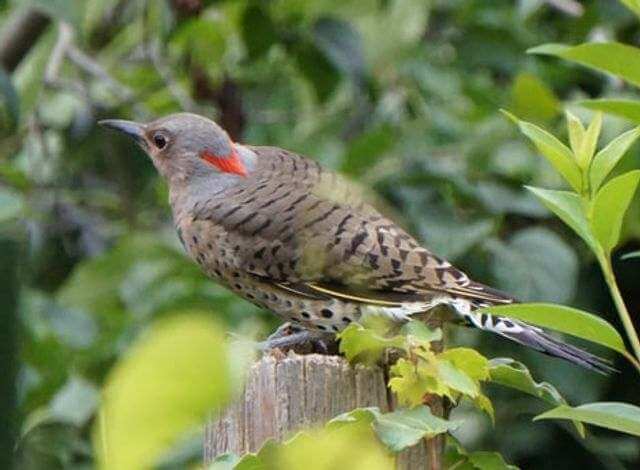
- Length: 11.0-12.0 in (28-31 cm)
- Weight: 3.9-5.6 oz. (110-160 g)
- Wingspan: 16.5-20.0 in (42-51 cm)
- Scientific Name: Colaptes auratus
- Frequency of Occurrence: 30.60% (Statistic by: eBird)
- Where To Find Them: The Northern Flicker is one of the most common birds in Oregon. They can be seen at many different locations around the state. Some good places to spot them include the Rogue River-Siskiyou National Forest, the Willamette Valley, and along the Columbia River.
- How To Attract: You can attract the Northern Flicker to your yard by providing feeders with peanuts, black-oil sunflower seeds or cracked corn. Additionally, you can build bird baths and create other areas where the birds can bathe and drink.
Description: Northern Flickers are found in the eastern two-thirds of the United States, from New England south to Florida and west to Texas. They are also found in Canada and Mexico. Northern Flickers live in a variety of habitats, from deciduous forests to desert scrub.
They prefer openings in trees such as holes created by woodpeckers or other animals, but can also be found to nest in sheltered areas such as crevices high up on a tree trunk or inside dead branches. Northern Flickers eat insects, especially larvae and eggs, but also small vertebrates. They build their nests out of sticks and grasses and lay two to six eggs.
Handpicked Related Content: How to Attract Northern Flickers to your Backyard (Easy)
Downy Woodpecker

- Length: 5.5-6.7 in (14-17 cm)
- Weight: 0.7-1.0 oz. (21-28 g)
- Wingspan: 9.8-11.8 in (25-30 cm)
- Scientific Name: Picoides pubescens
- Frequency of Occurrence: 10.99%
- Where To Find Them: The Downy Woodpecker is a common bird in Oregon. They can be found in many different locations, some of which include the Cascade Range, the Coast Ranges, and the Willamette Valley. They are also known to live in urban areas and agricultural areas.
- How to Attract: If you want to attract the hairy woodpecker to your yard, feed them black-oil sunflower seeds. Sunflower seeds are a favorite food of these birds, and cracked corn makes a great addition to their diet. If you have a bird bath, add some fresh water to it for the woodpeckers.
Description: The Downy Woodpecker is a common bird in the eastern and central United States, as well as in parts of Canada. The distribution range extends south to Costa Rica, and east to the Atlantic Ocean. It occupies deciduous and coniferous forests, woodlands, and mixed vegetation habitats.
The Downy Woodpecker is a cavity nester and typically excavates a hole in a tree trunk using its beak. It may also use an existing hole or make one from scratch. The bird feeds on insects, especially those that live in trees or on the ground beneath them.
Handpicked Related Content: How to Attract Downy Woodpeckers to Your Yard? (Easy!)
Hairy Woodpecker

- Length: 7.1-10.2 in (18-26 cm)
- Weight: 1.4-3.4 oz. (40-95 g)
- Wingspan: 13.0-16.1 in (33-41 cm)
- Scientific Name: Picoides villosus
- Frequency of Occurrence: 5.04%
- Where To Find Them: They can be found at many different locations in the state, but some of the best places to see them are around Eugene and Springfield.
- How To Attract: Black-oil sunflower seeds are a great way to attract the Hairy Woodpecker. These seeds are high in protein and contain essential fatty acids that can help sustain this bird’s energy levels. Plus, they look really neat scattered around your yard! Another popular option for attracting the Hairy Woodpecker is peanut butter suet. This type of feed contains plenty of nutrients like proteins and essential vitamins that can help keep these birds healthy.
Description: The Hairy Woodpecker is a small woodpecker that can be found in most of North America. It has a distribution range that includes most of Canada and the United States, as well as parts of Mexico. The habitat of the Hairy Woodpecker includes both coniferous and deciduous trees, but it is especially fond of hardwood forests.
The diet of the Hairy Woodpecker consists mainly of insects, spiders and other small creatures, but it will also eat berries, seeds and nuts. The Hairy Woodpecker usually nests in cavities in trees, but it will sometimes build its own nest. The eggs are laid by the female and are incubated by both parents. When the young birds hatch, they are fed by both parents until they are able to feed themselves.
Red-breasted Sapsucker

- Length: 7.9-8.7″ in. (20-22 cm)
- Weight: 1.9-2.2 oz. (53.0-63.5 g)
- Wingspan: 14.2-16.0″ in. (36-40.5 cm)
- Scientific Name: Sphyrapicus varius
- Frequency of Occurrence: 4.83%
- Where To Find Them: Locations where you can see this bird include Crater Lake National Park, Bend and Grants Pass.
- How to Attract: They love to eat sap from trees, and prefer areas with lots of pine, birch, aspen, maple, and elm trees. To attract this bird to your yard, try adding sugar water to a hummingbird feeder or peanut butter suet to your bird baths. You can also offer food like seed pellets or fresh fruit.
Description: The Red-breasted Sapsucker is a common and widespread bird found in eastern North America. It has a distribution that extends from southern New England and the Mid-Atlantic states south to Florida, west to Texas, and north to southeastern Canada. The Sapsucker inhabits dense growths of hardwood or conifer trees, along streams and rivers, in open woodland, and even in urban areas.
The diet of the Red-breasted Sapsucker consists mainly of insects such as ants, bees, wasps, beetles, and caterpillars. However, they will also eat tree sap, berries and fruit. Nests are typically constructed in dead wood or crevices in vertical surfaces, such as tree trunks or building walls.
Handpicked Related Content: 16 Interesting Sapsucker Facts Revealed!
Acorn Woodpecker
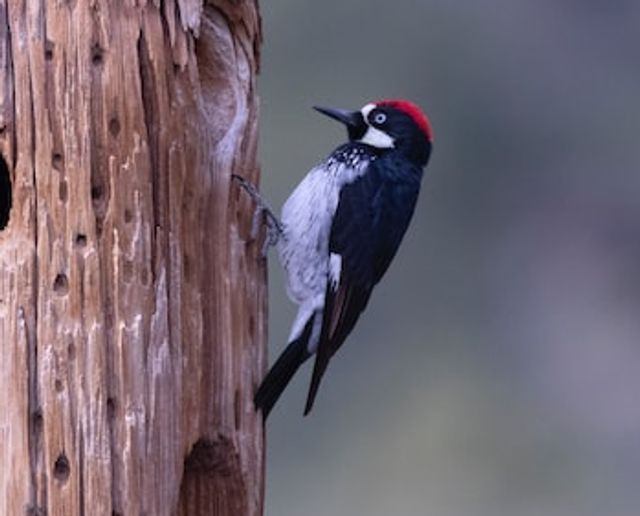
- Length: 7.3-9.4″ in (18.5-24.0 cm)
- Weight: 2.3-3.2 oz. (65-90 g)
- Wingspan: 13.8-17.7 in (35-45 cm)
- Scientific Name: Melanerpes formicivorus
- Frequency of Occurrence: 4.21%
- Where To Find Them: They are most commonly seen in the Willamette Valley, but have also been spotted in the Rogue River Valley and Central Oregon.
- How To Attract: Start by providing cracked corn on a platform feeder, and peanut butter suet as food sources. These high-energy foods will encourage the woodpecker to visit your yard more often. Add bird baths to your landscape and make sure they are filled with fresh water. This will provide a place for the woodpeckers to bathe and clean themselves. Plant trees that provide interesting habitat for birds, such as oaks, hickories, or maples. These trees will provide shelter and nesting grounds for woodpeckers and other birds.
Description: The Acorn Woodpecker is a small, brown and white woodpecker that can be found in the eastern United States. The Acorn Woodpecker’s distribution range stretches from North Carolina to Maine and west to Oklahoma. Its habitat consists of deciduous and mixed forest, but it can also be found in open woods.
The Acorn Woodpecker feeds on insects, especially carpenter ants, nuts, fruits, seeds, sometimes eggs. It excavates a hole in a tree trunk or other horizontal surface and lays three to six white eggs. Both parents incubate the eggs for about 10-11 days before they hatch. The chicks fledge at about three weeks old and become independent shortly after that.
Pileated Woodpecker
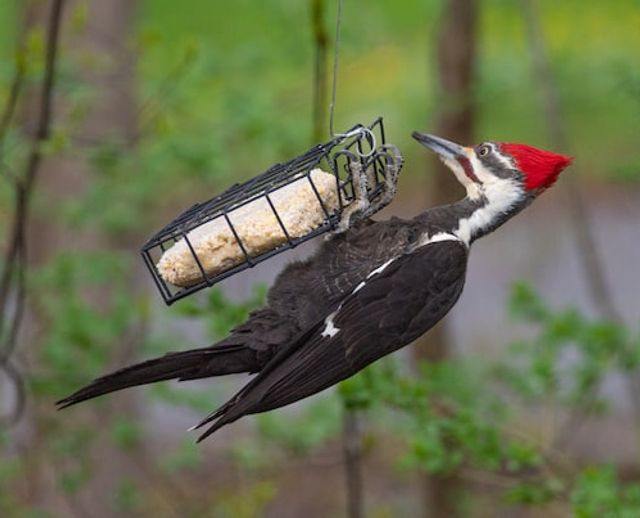
- Length: 15.8-19.3 in (40-49 cm)
- Weight: 8.8-12.3 oz. (250-350 g)
- Wingspan: 26.0-29.5 in (66-75 cm)
- Scientific Name: Dryocopus pileatus
- Frequency of Occurrence: 3.04%
- Where To Find Them: There are five locations in Oregon where you can see the pileated woodpecker. Three of these locations are in Salem-Keizer metropolitan area: Veteran’s Memorial Park, Deering Oaks Park, and Hillside Park. The other two locations are in the Coast Range National Monument: Warner Creek State Nature Preserve and Mount Hood National Forest.
- How To Attract: This bird is attracted to natural foods, such as peanuts and peanut butter suet, so adding these items to your yard will make the bird more likely to visit. You can also build bird baths or feeders with these food items and watch the woodpecker come to visit.
Description: A Pileated woodpecker is one of North America’s most well-known birds. This bird can be found in most parts of the United States, as well as in parts of Canada and Mexico. The Pileated woodpecker is a common bird in deciduous and mixed forests. It is also found in urban areas.
The Pileated woodpecker feeds on insects, especially carpenter ants and termites. It usually digs holes in trees to find food, and extracts them with its long tongue. The female creates a cavity in a dead tree or pole, and builds a nest out of wood chips, then lays three to five eggs per clutch. The chicks hatch after about three weeks and are able to fly within a few weeks.
Handpicked Related Content: How to Attract Pileated Woodpeckers to your Yard (Fast)
Lewis’s Woodpecker

- Length: 10.2-11.0 in (26-28 cm)
- Weight: 3.1-4.9 oz. (88-138 g)
- Wingspan: 19.3-20.5 in (49-52 cm)
- Scientific Name: Melanerpes lewis
- Frequency of Occurrence: 0.7108%
- Where To Find Them: This bird can be found in moist woodlands and along rivers and streams. It is not uncommon to spot them in the Willamette Valley or around Bend.
- How to Attract: If you want to attract the Lewis’s Woodpecker to your yard, try out some peanut butter suet. This attracts these birds by providing them with a high-energy food source. Another idea is to build bird baths from recycled cans. These are great places for the Lewis’s Woodpecker to bathe, and they provide plenty of fresh water for them to drink. You can also set up a feeder full of fresh fruit or seeds, which will help keep these birds happy and healthy.
Description: The Lewis’s Woodpecker is a common bird in eastern North America. It ranges from Nova Scotia to central Texas, and south to Florida and the Carolina’s. This woodpecker can be found in forests of deciduous and coniferous trees, parks, and urban gardens.
It also inhabits dead trees, telephone poles, and other elevated perches. This woodpecker is an omnivore that eats insects, spiders, berries, and seeds. It constructs its own cavities in trees using wood-chips. Nests are typically located high up in a tree with five to nine eggs.
White-headed Woodpecker
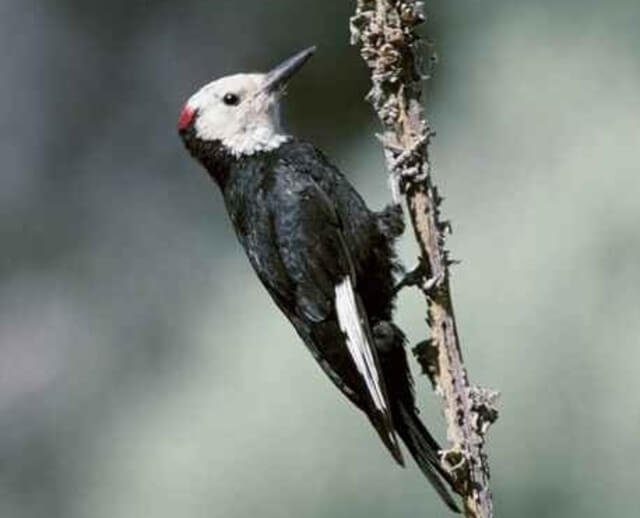
- Length: 7.9-9.1 in (20-23 cm)
- Weight: 1.9-2.3 oz (55-65 g)
- Wingspan:16.9 in (43 cm)
- Scientific Name: Picoides albolarvatus
- Frequency of Occurrence: 0.4645%
- Where To Find Them: They can be found in many locations, but some of the best places to see them include the forests near Ashland and Grant’s Pass, as well as the oak-hickory woods around Medford.
- How to Attract: Woodpeckers are one of the most commonly seen birds in yards, but White-headed Woodpeckers are some of the most difficult to attract. One way to try and bring these birds into your yard is by providing them with suet feeders. These feeders will give the woodpecker a steady supply of food, which will likely result in more frequent visits from these curious creatures.
Description: The White-headed Woodpecker is a common bird found throughout the eastern United States. The distribution range of the White-headed Woodpecker extends from Maine to Florida, west to Texas and north to Canada. They inhabit deciduous and mixed woodlands, typically near water.
The White-headed Woodpecker feeds primarily on insects and pine seeds; however, they will also consume beetles, ants, and in the winter they consume mostly nuts and berries. They excavate softwoods for their nests, which are typically in cavities in trees or cliffs. They lay about two to nine eggs per clutch, which are then incubated by both parents.
Williamson Sapsucker

- Length: 7.9-9.8″ in. (20-25 cm)
- Weight: 1.6-1.9 oz (44-55 g)
- Wingspan: 16.5-17 in (42-43 cm)
- Scientific Name: Sphyrapicus thyroideus
- Frequency of Occurrence: 0.3978%
- Where To Find Them: The Williamson Sapsucker can be seen in various locations in Oregon, including the Coast Range, the High Desert, and the Columbia Basin.
- How to Attract: They prefer to feed on suet, so if you have a feeding station for them, be sure to have some suet on hand. You can also try planting trees that produce sap, like the Hickory or Cornelian Cherry. Both of these trees will provide food for the Williamson Sapsucker.
Description: The Williamson Sapsucker is a small tree-dwelling bird found in the eastern United States. It has a distribution range of primarily in the Appalachian Mountains, but also ranging into the central and southern parts of the country.
The habitat consists mostly of hardwood and mixed forests, but it can also be found in other types of woodlands, including pine plantations. The diet consists mostly of insects, and tree sap, though it will consume small amounts of berries and fruit. The Williamson Sapsucker nests in cavities in trees.
Black-backed Woodpecker
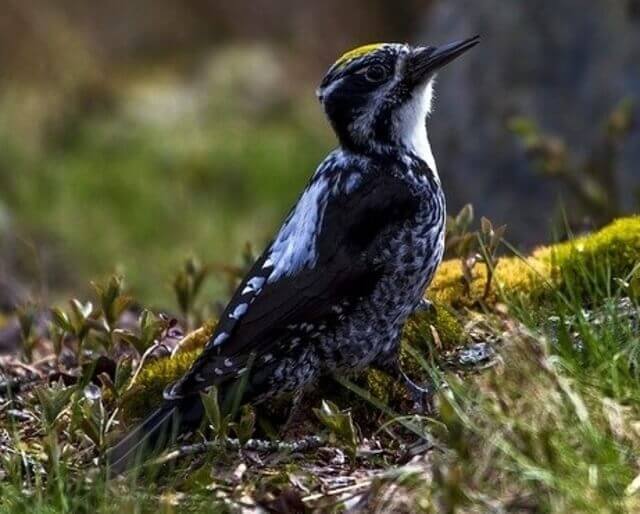
- Length: 8.6-9.0″ in (21.8-22.9 cm)
- Weight: 2.1-3.1 oz. (61-88 g)
- Wingspan: 15.8-16.5 in (40-42 cm)
- Scientific Name: Picoides arcticus
- Frequency of Occurrence: 0.2250%
- Where To Find Them: The birds can be found in the Willamette Valley, the Coast Range, Rogue River-Siskiyou National Forest, John Day National Monument and Crater Lake National Park.
- How to Attract: One of the easiest ways is to feed them peanut butter suet. They love this food and will come to your yard in search of it. Another way to get them to visit your yard is by offering them hummingbird nectar, or by planting flowers that produce it. They love this sweet stuff and will be drawn to it. Finally, make sure that you have plenty of trees and shrubs in your yard that they can perch on. This will help them stay safe when looking for food and shelter.
Description: The Black-backed Woodpecker is a bird that can be found in the eastern half of the United States. The distribution range covers parts of Alabama, Arkansas, Connecticut, Delaware, Georgia, Illinois, Indiana, Iowa, Kansas, Kentucky, Louisiana, Maine, Maryland, Massachusetts, Michigan, Minnesota, Mississippi, Missouri, Ohio, Oklahoma Tennessee Texas Virginia and West Virginia.
The habitat for this bird includes deciduous and mixed forests, as well as areas with large trees. The diet consists mainly of insects such as beetle larvae, spiders, but they will also eat some fruit, seeds and nuts. This bird usually nests in cavities in trees, but they have been known to nest in other types of structures.
Red-naped Sapsucker
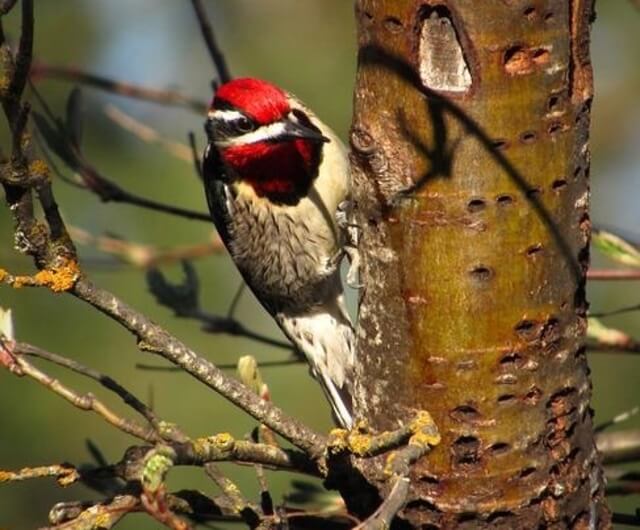
- Length: 7.1-8.7″ in (18-22 cm)
- Weight: 1.1-2.3 oz. (32-65 g)
- Wingspan: 15.7-17.3″ in (40-44 cm)
- Scientific Name: Sphyrapicus ruber
- Frequency of Occurrence: 0.2176%
- Where To Find Them: They can be found in most areas of the state, but are more common in the Willamette Valley and along the coast.
- How To Attract: To attract the Red-naped Sapsucker to your yard, provide a suet feeder with enough suet to last several days. Place the feeder in an accessible spot near trees or bushes that the sapsucker is known to frequent. Plant a variety of fruit trees in your yard, including berries, apples, pears, and grapes. The bird loves these items and will often feed from the ground or from low-hanging branches.
Description: The Red-naped Sapsucker is a common species of woodpecker found in the eastern half of North America. The distribution range includes most of New England, Quebec and Ontario south to eastern Texas and Florida. Its habitat includes deciduous and coniferous forests, as well as wetlands.
The Red-naped sapsucker feeds primarily on insects, including beetles, cockroaches, scorpions, and spiders, but will also consume fruit, berries and tree sap. They generally build their nests in cavities such as trees or under ledges, and lays two to seven white eggs, that are incubated and by both parents for 9-12 days.
American Three-toed Woodpecker

- Length: 8.3-9.1 in (21-23 cm)
- Weight: 1.6-2.4 oz. (44.8-67.9 g)
- Wingspan: 14.6-15.3 in (37-39 cm)
- Scientific Name: Picoides dorsalis
- Frequency of Occurrence: 0.0578%
- Where To Find Them: They can be found in Oregon, but their best locations to see them are in the areas around Ashland and Medford.
- How to Attract: They like to live in forests and wooded areas, but will also visit suburban yards if they are given access. You can attract the birds to your yard by providing them with food and water, as well as nesting boxes. Make sure to keep your garden tidy, so the birds can find food and shelter.
Description: The American Three-toed Woodpecker is a medium-sized woodpecker that can be found in the eastern and central United States. The distribution range of this bird extends from North Carolina to Texas, with a small population also found in New Mexico. The habitat of the American Three-toed Woodpecker includes forests, parks, and other wooded areas.
They are typically seen perched on high trees searching for insects and other small prey. The diet of the American Three-toed Woodpecker consists mostly of insects, but they will also eat tree sap and fruit. The birds usually nest in cavities in trees, but they have been known to nest on utility poles.
Yellow-bellied Sapsucker
- Length: 7.1-8.7 in (18-22 cm)
- Weight: 1.5-1.9 oz. (43-55 g)
- Wingspan: 13.4-15.8 in (34-40 cm)
- Scientific Name: Sphyrapicus varius
- Frequency of Occurrence: 0.04%
- Where To Find Them: One of the best places to see them is at Crater Lake National Park.
- How to Attract: Plant plenty of flowering shrubs and trees that provide nectar and fruit for the birds. This will help attract them to your yard. Install a bird feeder in an easily accessible spot near a tree or shrub where the sapsucker is likely to visit. Place pieces of wood or other material around your yard that resemble sticks and logs that can be used by the birds for perching and nesting.
Description: The yellow-bellied sapsucker is a widespread bird in the eastern United States. It breeds in the Appalachian Mountains and adjacent areas from eastern North Carolina to Western Virginia. It is also found in central and southern New England, as well as Maine and northern New York.
This species frequents mixed hardwood and coniferous forests, but can also be found in suburban areas of orchards. The yellow-bellied sapsucker feeds on insects, especially beetles and caterpillars, which it finds on the ground or in low trees, arthropods, fruits, tree sap and nuts. It creates its nest by excavating cavities high up in tree trunks.
Red-bellied Woodpecker
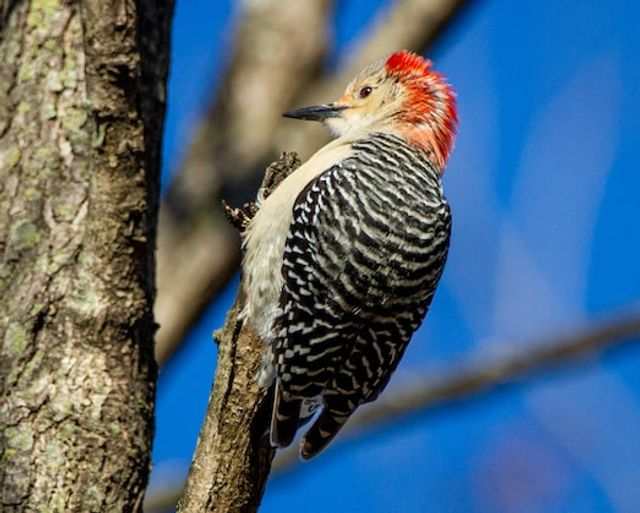
- Length: 9.5 in (24 cm)
- Weight: 2.0-3.2 oz. (56-90 g)
- Wingspan: 13.0-16.5 in (33-42 cm)
- Scientific Name: Melanerpes carolinus
- Frequency of Occurrence: 0.0041%
- Where To Find Them: The bird inhabits a wide range of habitats, from dense second growth in the Willamette Valley to lower elevations on the east side of the Cascades. You can find them in a variety of locations in Oregon, but some favorites include areas near Willamette Falls and around McKenzie Lake.
- How to Attract: To attract them to your yard is to install a bird feeder with sunflower seeds, peanuts and suet. You can also try to put up birdhouses or make other areas available for them to perch, like a birdbath.
Description: The Red-bellied Woodpecker is a common bird found throughout most of the eastern half of North America. It ranges from southern Canada to Florida and west to Texas. The woodpecker is mostly a forest dweller, but will also inhabit areas near water, such as wetlands and rivers.
The bird feeds on insects and other small animals, but will also take nuts, fruit and seeds if available. Like other woodpeckers, the red-bellied can excavate a hole in trees to make its home. The birds often nest in cavities that are found in high tree branches or on the ground below the tree line.
Handpicked Related Content: How to Attract Red-bellied Woodpeckers to your Yard?
Red-headed Woodpecker
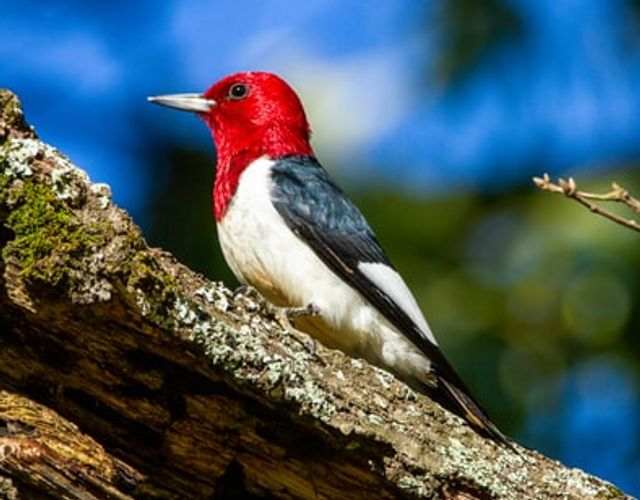
- Length: 7.5-9.1 in (19-23 cm)
- Weight: 2.0-3.2 oz. (56-91 g)
- Wingspan: 16.5 in (42 cm)
- Scientific Name: Melanerpes erythrocephalus
- Frequency of Occurrence: 0.0012%
- Where To Find Them: They can be found in many different locations, but some of the most popular spots are around Ashland and Medford.
- How to Attract: You can offer them fruit, meal worms, or bird feeders with seeds and nuts like acorns. Another way to get them in your yard is to get a birdhouse or perch for them.
Description: The Red-headed Woodpecker is a medium-sized bird native to the eastern and central United States. It ranges from southern New York State to eastern Texas, and west to Iowa and Nebraska. In the east, it is found mainly in deciduous forests, but in the west it can be found in chaparral and pine forests.
The Red-headed Woodpecker’s diet consists mainly of insects, but it also consumes small vertebrates such as rodents and birds. It excavates deep cavities in trees to build its nest; the average depth of a nesting hole is 1.5 feet. The eggs are incubated by both parents for 15 days, after which the young leave the nest.
Handpicked Related Content: Interesting Red-Headed Woodpecker Facts (Explained)
Nuttall’s Woodpecker

- Length: 6.2-7.0″ in. (15.7-17.8 cm)
- Weight: 1.1-1.6 oz (30-45 g)
- Wingspan: 13.0-15.7 in (33-40 cm)
- Scientific Name: Picoides nuttallii
- Frequency of Occurrence: 0.0001%
- Where To Find Them: This bird can be seen in locations such as Cape Blanco National Monument, Ashland, The Dalles, Gold Beach and Brookings. In addition to these locations, the Nuttall’s Woodpecker can also be found in the hills near Grants Pass.
- How to Attract: One way to attract Nuttall’s Woodpeckers to your yard is by planting trees that provide them with food and shelter. You can also set up a feeder full of fresh sunflower seeds or suet.
Description: The Nuttall’s Woodpecker is a medium-sized woodpecker found in the Western United States and the Northeastern Mexico. The Nuttall’s Woodpecker ranges from Oregon to New Mexico and west to Texas. They are found in a variety of habitats including forests, wooded hills, riparian areas, and open shrublands.
The Nuttall’s Woodpecker diet consists of insects, especially ants and termites, but it will also consume things like seeds, nuts, fruits, and berries. They typically forage in trees, but will also take prey on the ground. Nuthatches are their primary cavity nesting partners, but they will also use holes in trees or cliffs made by other animals.
Frequently Asked Questions
What is the most common woodpecker in Oregon?
The most common woodpecker in Oregon is the Northern Flicker. This bird has a 30 percent frequency of occurrence and can be found throughout the state. It prefers open woods, but can also be found in urban areas.
What is the biggest woodpecker in Oregon?
The pileated woodpecker is the biggest woodpecker in Oregon. It can be found in the higher elevations of the state, where it forages for insects and small animals.
Are red-headed woodpeckers in Oregon?
Oregon is home to a number of rare and uncommon birds, including the red-headed woodpecker. These birds can be found in a handful of locations around the state, but sightings are not common. The birds can be found in the high desert areas near Bend and in southwestern Oregon near Ashland.
Are Northern Flickers in Oregon?
Northern Flicker populations in Oregon are fairly widespread. The most common areas where you will see Northern Flickers in Oregon are around old-growth forests and along small streams and creeks.
You may also see them near agricultural areas, or along roadsides or other open habitats. The best time to look for them is during early morning or late afternoon, when they are usually most active.
There are two primary locations where you can find Northern Flickers in Oregon: Eagle Creek Park near Eugene and Mount Pisgah National Forest near Grants Pass.
Eagle Creek Park is home to a large nesting colony, while Mount Pisgah National Forest has an active population that can be seen flying around during the day.
Are woodpeckers protected in Oregon?
Yes, woodpeckers are protected under the Migratory Bird Treaty Act. This means that they are illegal to kill, damage, harass, or take any bird, nest, or egg that belongs to a federally protected migratory bird species.
Do Oregon woodpeckers migrate?
Oregon’s woodpeckers are among the birds that stay in one area all year long. These birds are classified as residents, which means that they usually do not migrate. However, there have been documented cases of woodpeckers moving to warmer climates during the winter.
Are there woodpeckers in Portland, Oregon?
There are a variety of woodpeckers found in Portland, Oregon, but the most common species is the red-headed woodpecker. Other common species include the white-headed woodpecker, the downy woodpecker, and the yellow-bellied sapsucker.
Do pileated woodpeckers live in Oregon?
Oregon is home to a variety of animals, including pileated woodpeckers. These birds are native to the region and can be found living in various parts of the state. The pileated woodpecker is a large bird that has a long neck and bill. They are known for their habit of pecking at tree trunks, and can be seen throughout Oregon.
Related Post: Most Common Backyard Birds In Oregon (Explained)

